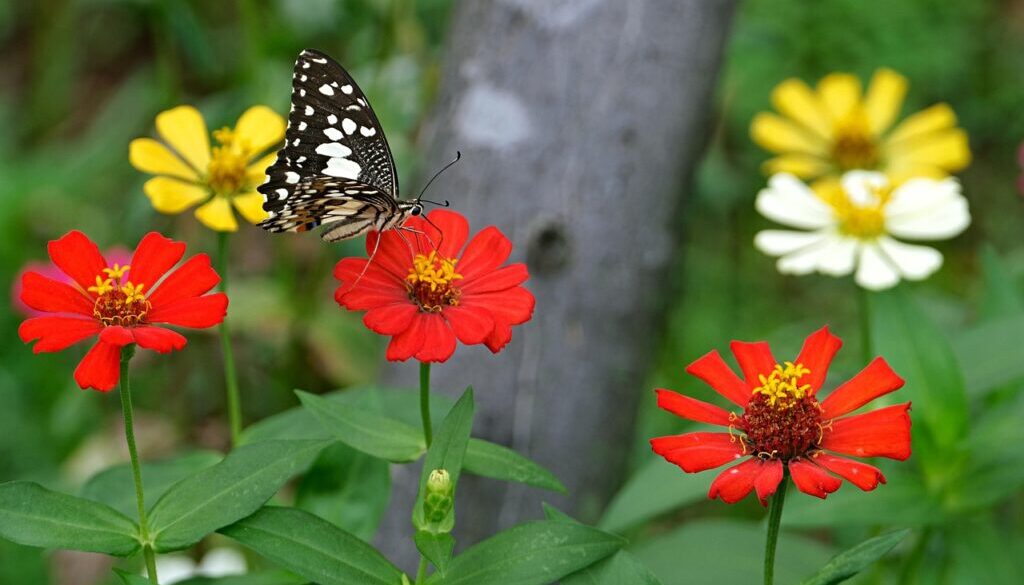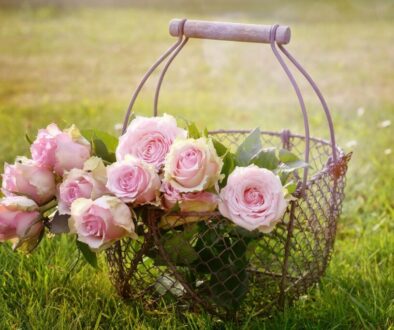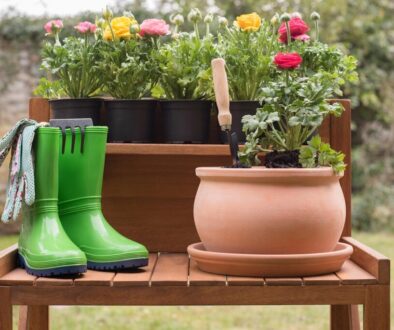Dwarf Flower Varieties: Perfect Blooms for Your Small Garden
If you’re dreaming of a vibrant garden but don’t have much space, dwarf flower varieties are your new best friends. These compact beauties pack all the charm of their taller counterparts but fit perfectly in small gardens, containers, or even window boxes. Imagine a burst of color without the hassle of overwhelming growth. Dwarf flowers are low-maintenance, versatile, and ideal for adding personality to cozy spaces. Whether you’re a seasoned gardener or a beginner, these tiny wonders will make your garden feel like a floral paradise.
Why Dwarf Flowers Are a Small Garden’s Best Friend
Small gardens come with unique challenges, but dwarf flowers are here to save the day. Their petite size means they won’t overcrowd your space, leaving room for other plants or garden decor. Plus, they’re incredibly adaptable. You can plant them in raised beds, pots, or even hanging baskets. Dwarf varieties often bloom just as brightly as larger flowers, so you won’t miss out on visual impact. They’re also easier to care for, requiring less pruning and staking. With dwarf flowers, you can create a lush, colorful garden without feeling overwhelmed.
Top Dwarf Flower Varieties to Brighten Your Space
Let’s dive into some of the most stunning dwarf flower varieties that will transform your small garden. First up, dwarf marigolds. These cheerful blooms come in shades of yellow, orange, and red, adding a sunny vibe to any space. They’re also great for repelling pests, making them a practical choice. Next, consider dwarf zinnias. These vibrant flowers are a magnet for butterflies and come in a rainbow of colors. They’re perfect for adding a pop of color to borders or containers.
Another favorite is the dwarf snapdragon. With their whimsical, dragon-shaped blooms, these flowers add a touch of magic to your garden. They thrive in cooler weather, making them ideal for spring or fall planting. For a more delicate look, try dwarf asters. These star-shaped flowers bloom in late summer and fall, extending your garden’s beauty into the cooler months.
If you love fragrant blooms, dwarf lavender is a must. Its soothing scent and purple spikes create a calming atmosphere, and it’s perfect for small herb gardens. Lastly, don’t overlook dwarf dahlias. These show-stoppers come in a variety of colors and patterns, making them a focal point in any garden.
Tips for Growing Dwarf Flowers Successfully
Growing dwarf flowers is easy, but a few tips can help you get the most out of your plants. First, choose the right location. Most dwarf varieties thrive in well-draining soil and need at least six hours of sunlight daily. If you’re planting in containers, ensure they have drainage holes to prevent waterlogging.
Watering is key, but don’t overdo it. Dwarf flowers prefer slightly moist soil, so let the top inch dry out before watering again. Fertilize them lightly during the growing season to encourage healthy blooms. Deadheading, or removing spent flowers, will keep your plants looking fresh and promote continuous blooming.
Finally, don’t be afraid to mix and match. Combining different dwarf flower varieties creates a dynamic, layered look. Pair taller dwarf plants with trailing ones for added depth. With a little care, your small garden will become a colorful retreat you’ll love spending time in.
Designing with Dwarf Flowers: Creative Ideas for Small Spaces
Designing a small garden with dwarf flowers is all about creativity. Start by using vertical space. Hang baskets filled with trailing dwarf varieties like lobelia or petunias to add height without taking up ground space. You can also use tiered planters to create a cascading effect.
Another idea is to create a themed garden. For example, a butterfly garden with dwarf zinnias, marigolds, and snapdragons will attract pollinators and add life to your space. Or, go for a monochromatic look by planting dwarf flowers in shades of one color, like a serene blue palette with lobelia and dwarf delphiniums.
Don’t forget about pathways and borders. Lining walkways with dwarf flowers like alyssum or dwarf carnations adds charm and guides the eye through your garden. For a cozy corner, place a small bench surrounded by pots of dwarf lavender and asters. The possibilities are endless, and your small garden will feel like a personalized oasis.
The Benefits of Dwarf Flowers Beyond Beauty
Dwarf flowers aren’t just pretty faces; they offer practical benefits too. Their compact size makes them ideal for urban gardens, balconies, or even indoor spaces with enough light. They’re also great for kids’ gardens, as their small scale is less intimidating and easier to manage.
Many dwarf varieties are drought-tolerant, making them a smart choice for water-conscious gardeners. They’re also less prone to wind damage compared to taller plants, ensuring your garden stays intact during breezy days. Plus, their shorter stature means you won’t need to worry about them blocking sunlight for other plants.
Dwarf flowers also encourage biodiversity. Their blooms attract bees, butterflies, and other pollinators, supporting the local ecosystem. By planting dwarf varieties, you’re not just beautifying your space—you’re contributing to a healthier environment.
Dwarf Flower Varieties: A World of Color in Miniature
When you think of a garden, you might imagine vast expanses of flowers stretching as far as the eye can see. But what if your space is more compact? Enter dwarf flower varieties—the unsung heroes of small gardens. These petite plants are proof that you don’t need acres of land to create a breathtaking floral display. Whether you’re working with a tiny backyard, a balcony, or even a windowsill, dwarf flowers can transform your space into a vibrant oasis. Let’s explore why these little wonders are a must-have for any small garden enthusiast.
 Why Dwarf Flowers Shine in Small Spaces
Why Dwarf Flowers Shine in Small Spaces
Small gardens come with their own set of challenges, but dwarf flowers are uniquely suited to overcome them. Their compact size means they won’t overwhelm your space, leaving room for other plants or decorative elements. Unlike their taller counterparts, dwarf varieties don’t require staking or extensive pruning, making them a low-maintenance option for busy gardeners.
Another advantage of dwarf flowers is their versatility. You can plant them in containers, raised beds, or even vertical gardens. This flexibility allows you to get creative with your garden design, whether you’re working with a narrow balcony or a petite patio. Plus, many dwarf varieties bloom just as profusely as larger plants, ensuring your garden is bursting with color all season long.
Must-Try Dwarf Flower Varieties for Your Garden
Ready to add some dwarf flowers to your small garden? Here are some standout varieties that are sure to impress:
- Dwarf Marigolds: These sunny blooms are a classic choice for small gardens. With their bright yellow, orange, and red hues, they add a cheerful touch to any space. Dwarf marigolds are also known for their pest-repelling properties, making them a practical and pretty addition to your garden.
- Dwarf Zinnias: If you’re looking for a pop of color, dwarf zinnias are the way to go. These vibrant flowers come in a range of shades, from hot pink to deep purple, and attract butterflies like magnets. They’re perfect for borders, containers, or even cut flower arrangements.
- Dwarf Snapdragons: With their whimsical, dragon-shaped blooms, dwarf snapdragons add a touch of magic to any garden. They thrive in cooler weather, making them an excellent choice for spring or fall planting.
- Dwarf Lavender: For a fragrant and calming addition to your garden, try dwarf lavender. Its soothing scent and delicate purple spikes make it a favorite for small herb gardens or container plantings.
- Dwarf Dahlias: If you want to make a statement, dwarf dahlias are the way to go. These show-stopping flowers come in a variety of colors and patterns, making them a focal point in any garden.
- Dwarf Asters: These star-shaped blooms are perfect for adding late-season color to your garden. Dwarf asters bloom in late summer and fall, ensuring your garden stays vibrant even as the weather cools.
How to Care for Dwarf Flowers Like a Pro
Growing dwarf flowers is a breeze, but a little know-how can go a long way. Here are some tips to help your petite plants thrive:
- Choose the Right Spot: Most dwarf flowers prefer well-draining soil and plenty of sunlight. Aim for at least six hours of direct sunlight each day. If you’re planting in containers, make sure they have drainage holes to prevent waterlogging.
- Water Wisely: While dwarf flowers need regular watering, it’s important not to overdo it. Let the top inch of soil dry out before watering again to avoid root rot.
- Feed Them Well: A light application of fertilizer during the growing season can encourage healthy blooms. Look for a balanced, slow-release fertilizer to keep your plants happy.
- Deadhead Regularly: Removing spent flowers not only keeps your garden looking tidy but also promotes continuous blooming.
- Mix and Match: Don’t be afraid to experiment with different dwarf flower varieties. Combining plants with varying heights, colors, and textures creates a dynamic and visually appealing garden.
 Designing with Dwarf Flowers: Tips and Tricks
Designing with Dwarf Flowers: Tips and Tricks
One of the best things about dwarf flowers is their versatility. Here are some creative ideas for incorporating them into your small garden design:
- Vertical Gardens: Make the most of your space by going vertical. Hang baskets filled with trailing dwarf varieties like lobelia or petunias to add height and visual interest.
- Themed Gardens: Create a garden with a specific theme, such as a butterfly garden or a monochromatic color scheme. For example, plant dwarf zinnias, marigolds, and snapdragons to attract pollinators, or stick to shades of blue with lobelia and dwarf delphiniums for a serene vibe.
- Pathway Borders: Line your garden pathways with low-growing dwarf flowers like alyssum or dwarf carnations. This not only adds charm but also helps define the space.
- Container Gardens: If you’re short on ground space, containers are your best friend. Mix and match different dwarf flower varieties in pots of varying sizes for a layered look.
- Cozy Corners: Create a cozy nook by placing a small bench or chair surrounded by pots of dwarf lavender and asters. This creates a peaceful retreat where you can relax and enjoy your garden.
The Hidden Benefits of Dwarf Flowers
Beyond their beauty, dwarf flowers offer a host of practical benefits. For starters, their compact size makes them ideal for urban gardens, balconies, and even indoor spaces with sufficient light. They’re also a great choice for beginner gardeners or those with limited time, as they require less maintenance than larger plants.
Many dwarf flower varieties are drought-tolerant, making them a smart choice for water-conscious gardeners. They’re also less prone to wind damage, ensuring your garden stays intact during breezy weather. Additionally, their shorter stature means they won’t block sunlight for other plants, allowing you to create a layered garden with ease.
Dwarf flowers also play a role in supporting biodiversity. Their blooms attract bees, butterflies, and other pollinators, helping to sustain the local ecosystem. By planting dwarf varieties, you’re not just enhancing your garden—you’re contributing to a healthier environment.
 Conclusion: Small Garden, Big Impact with Dwarf Flowers
Conclusion: Small Garden, Big Impact with Dwarf Flowers
Who says you need a sprawling yard to have a stunning garden? Dwarf flower varieties prove that big things come in small packages. With their vibrant colors, easy care, and versatility, these tiny blooms are perfect for small gardens. Whether you’re filling containers, lining pathways, or creating a themed garden, dwarf flowers offer endless possibilities.
So, roll up your sleeves and start planting. Your small garden is about to become a colorful, fragrant haven that brings joy every time you step outside. With dwarf flowers, you’ll discover that even the tiniest spaces can make a big impact.
Happy Gardening!







